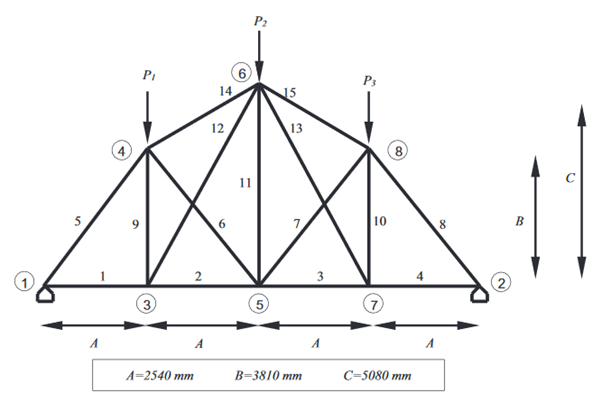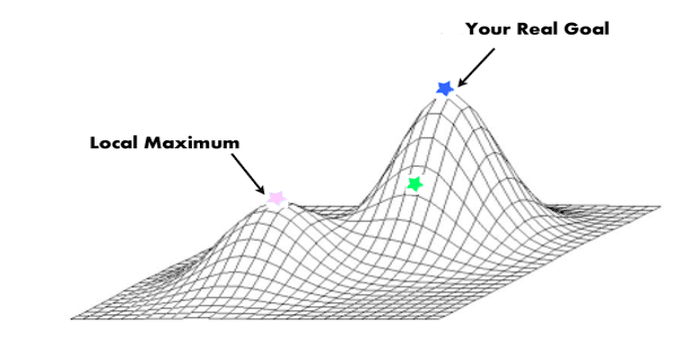Roughly speaking, optimization is finding the feasible set of design variables that leads to optimum value of a specified objective (e.g. minimizing cost, minimizing weight, maximizing fracture toughness etc.). It is preferred that we can reach the global optimum, not a local one. This is also a challenge in solving optimization problem, because we do not know the global optimum beforehand.
An optimization problem must have the following components:
- A set of design variables.
- One objective function (Single-objective optimization), or
Multiple objective functions (Multiple objective optimization). - Constraints (optional).
For example, now let us consider a truss system, see Figure 1. Then we want to select the cross-sections of each truss member such that the total weight of the system is as small as possible. However the solution is only admissible if the displacement at each node does not exceed a limit value and the axial stress in each truss does not exceed a limit value.
With the above description, our optimization problem is formulated as follows
- Design variables are the cross-sections of all the truss members.
- Objective function: the total weight of the truss system.
- Constraints:
- Displacement at each node is not allowed to exceed the limit value.
- Axial stress value in each truss member is not allowed to exceed the limit valual

